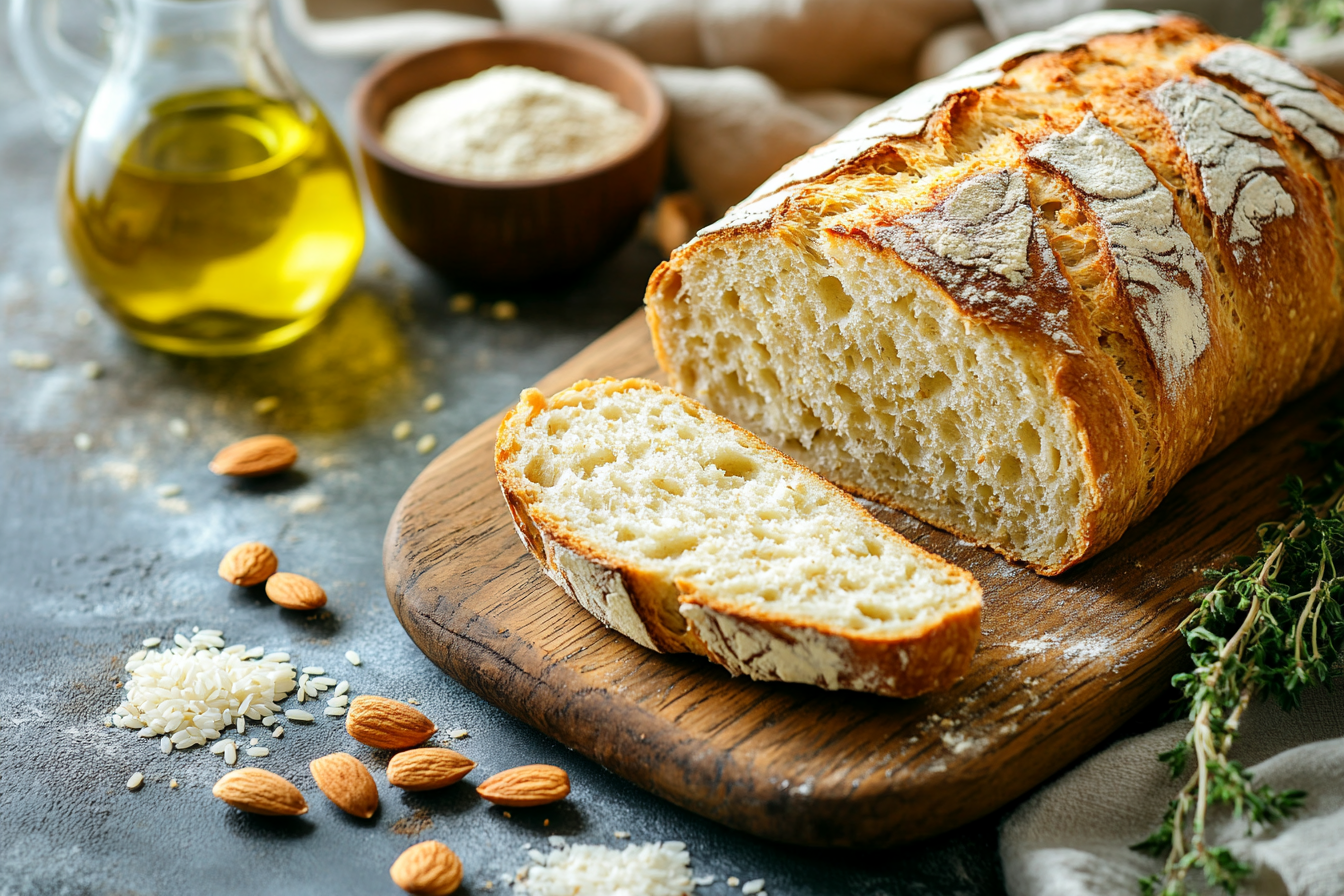Gluten free bread doesn’t have to be dry, bland, or disappointing. In fact, with the right techniques and ingredients, it can be just as satisfying—if not more—than traditional loaves. Whether you’re going gluten free for health reasons or curiosity, this guide breaks down everything from types of gluten free bread to why doctors debate the diet. I’ll share personal stories, expert baking tips, and flavor combinations that might just make you forget wheat ever existed. Plus, don’t miss my favorite pairing with gluten-free Greek dessert—it’s a comfort-food match made in heaven.
Table of Contents
Table of Contents
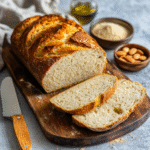
Gluten Free Bread: How to Enjoy Every Slice Without Missing a Thing
- Total Time: 1 hour
- Yield: 1 loaf
Description
Soft, chewy gluten free bread made with a blend of rice, almond, and tapioca flours. Bakes to golden perfection and slices beautifully—great for toast or sandwiches.
Ingredients
1 cup rice flour
1/2 cup tapioca starch
1/4 cup almond flour
1 tsp xanthan gum or psyllium husk
1 tsp salt
1 tbsp olive oil
1 tsp apple cider vinegar
1 tbsp honey
1 packet instant yeast
3/4 cup warm water
Instructions
1. In a large bowl, combine rice flour, tapioca starch, almond flour, xanthan gum, and salt.
2. Add olive oil, vinegar, honey, and warm water. Mix well until a sticky dough forms.
3. Cover and let rest for 25 minutes to hydrate the flours.
4. Transfer dough into a greased loaf pan and smooth the surface.
5. Let it rise in a warm place for 45–60 minutes.
6. Preheat oven to 375°F (190°C). Bake for 35–40 minutes until golden brown.
7. Cool completely on a wire rack before slicing.
Notes
For extra softness, add 1/4 cup mashed sweet potato or plain yogurt.
Best enjoyed fresh or lightly toasted.
Store in an airtight container for up to 3 days or freeze in slices.
- Prep Time: 20 minutes
- Cook Time: 40 minutes
- Category: Bread
- Method: Baking
- Cuisine: Gluten-Free
Nutrition
- Serving Size: 1 slice
- Calories: 120
- Sugar: 2g
- Sodium: 180mg
- Fat: 3g
- Saturated Fat: 0.5g
- Unsaturated Fat: 2.5g
- Trans Fat: 0g
- Carbohydrates: 22g
- Fiber: 2g
- Protein: 3g
- Cholesterol: 0mg
Gluten Free Bread and Loving the Lifestyle
Why Gluten Free Bread Changed My Kitchen
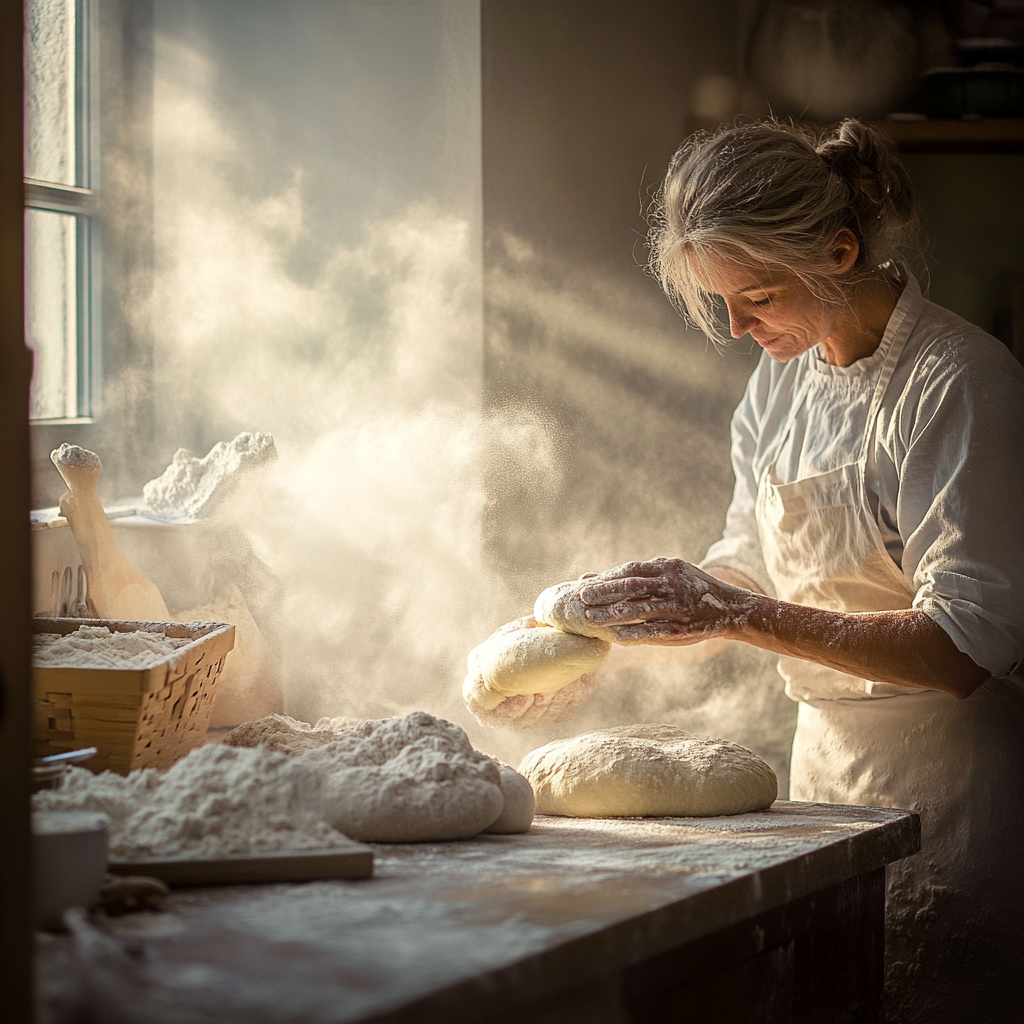
My gluten free journey started with one request: a birthday cake and gluten free bread for a little girl with celiac disease. I’ll be honest—I had zero experience. I was that baker who thought gluten free bread meant sad, dry slices wrapped in plastic. But I took on the challenge. I tested rice flour, almond flour, and everything in between. My first loaf? A disaster. The second? Too crumbly. But the third—soft, golden, and slightly nutty—became a customer favorite and a proud moment in my Dubai kitchen.
Since then, gluten free bread has been a staple in my baking rotation. It taught me patience and the beauty of alternative grains. Most of all, it reminded me that comfort food doesn’t need gluten to feel like home.
What Gluten Free Bread Really Means
At its core, gluten free bread contains zero wheat, barley, or rye. But it’s not just about removing ingredients—it’s about adding the right ones. A good loaf often blends flours like rice, sorghum, almond, or buckwheat with natural binders like psyllium husk or xanthan gum. These help mimic the structure that gluten normally gives to dough.
Anyone diagnosed with celiac disease relies on gluten free bread as a safe daily staple. For others, it may reduce bloating, brain fog, or skin flare-ups. And no—it’s not all bland or crumbly. When done right, it’s soft, chewy, and just as satisfying as any traditional loaf.
Understanding Bread Options in a Gluten-Free World
What Types of Bread Are Gluten Free?
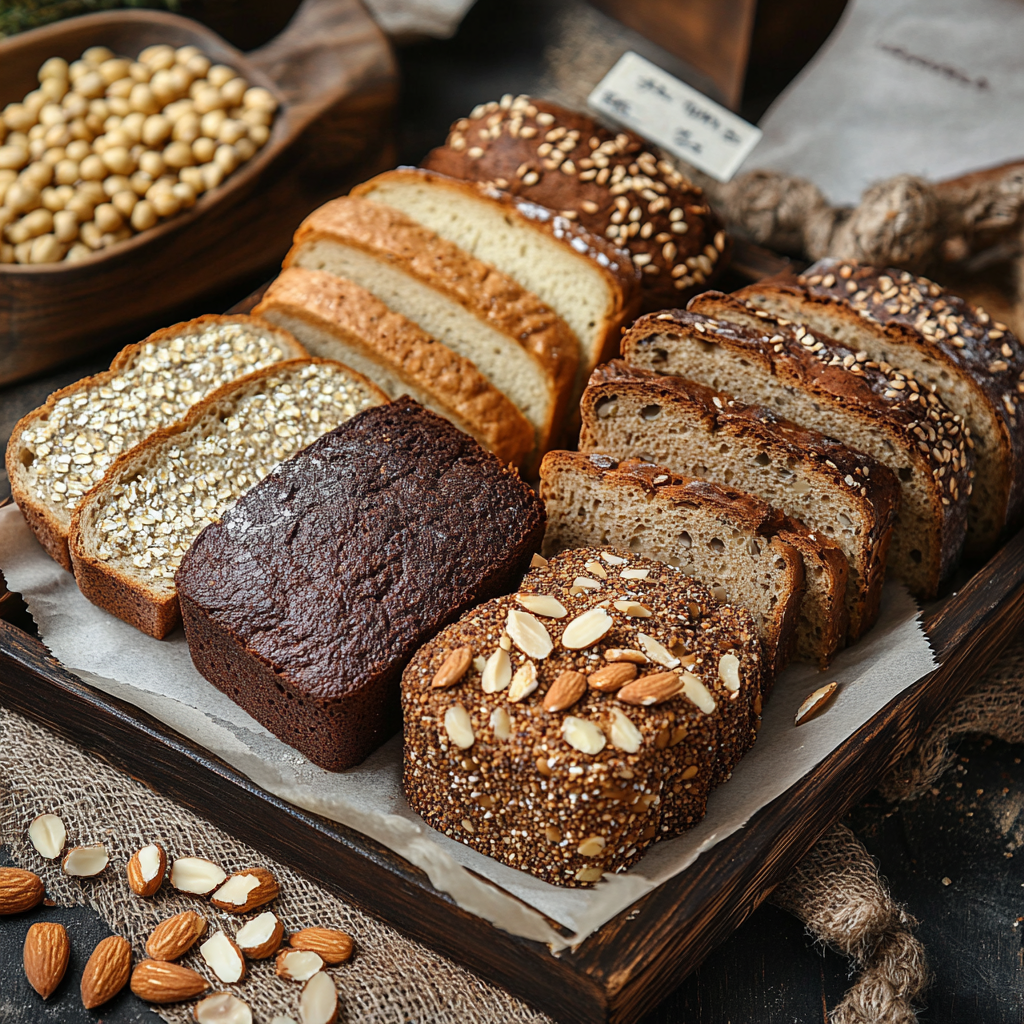
Gone are the days when gluten free bread meant crumbly, flavorless bricks. Today, the variety is impressive. You’ll find loaves made from rice flour, almond flour, sorghum, millet, or even chickpeas. Some brands combine starches like tapioca or potato with natural binders to hold things together and keep moisture locked in.
Not all gluten free bread is created equal. Some are soft and sandwich-ready, others are dense and hearty—great for toast or open-faced toppings. Want a shortcut to flavor and texture? Try warming slices before serving or adding olive oil, hummus, or a sprinkle of za’atar. Gluten free bread shines when paired with bold, fresh ingredients.
Many home bakers also swear by DIY blends. A popular formula includes a mix of 60% rice flour, 30% starch (like tapioca), and 10% almond flour or protein-rich alternatives. The key? Balance. You need structure, chew, and enough flavor to make it worth every bite.
Why It’s Not Just About Ingredients
Creating a good gluten free bread isn’t just about swapping flours. It’s about mimicking the stretch and air-trapping magic of gluten without using it. That’s why most gluten free bread recipes include psyllium husk, xanthan gum, or flaxseed meal. These binders help the dough stay elastic, hold air, and bake into something light—not brick-heavy.
Pair your favorite loaf with a refreshing dip from this lemon balm recipe—you’ll be surprised how it elevates a simple slice.
The Truth About Health and Taste
Why Are So Many Doctors Against a Gluten-Free Diet?
The gluten-free trend has grown fast, but not everyone’s on board—especially in the medical world. Many doctors caution that eliminating gluten without a clear medical reason might cause more harm than good. That’s because traditional whole grains like wheat are rich in fiber, B vitamins, and minerals. When you cut them out, you need to be intentional about replacing those nutrients.
For people with conditions like celiac disease or gluten sensitivity, removing gluten is non-negotiable. But if you’re going gluten free just to “eat clean,” remember: gluten isn’t a toxin. It’s a protein. And many processed alternatives to wheat-based products can actually be lower in nutrition and higher in sugar or starch.
Eating smarter—not just wheat-free—is what counts.
Does It Taste Like the Real Thing?
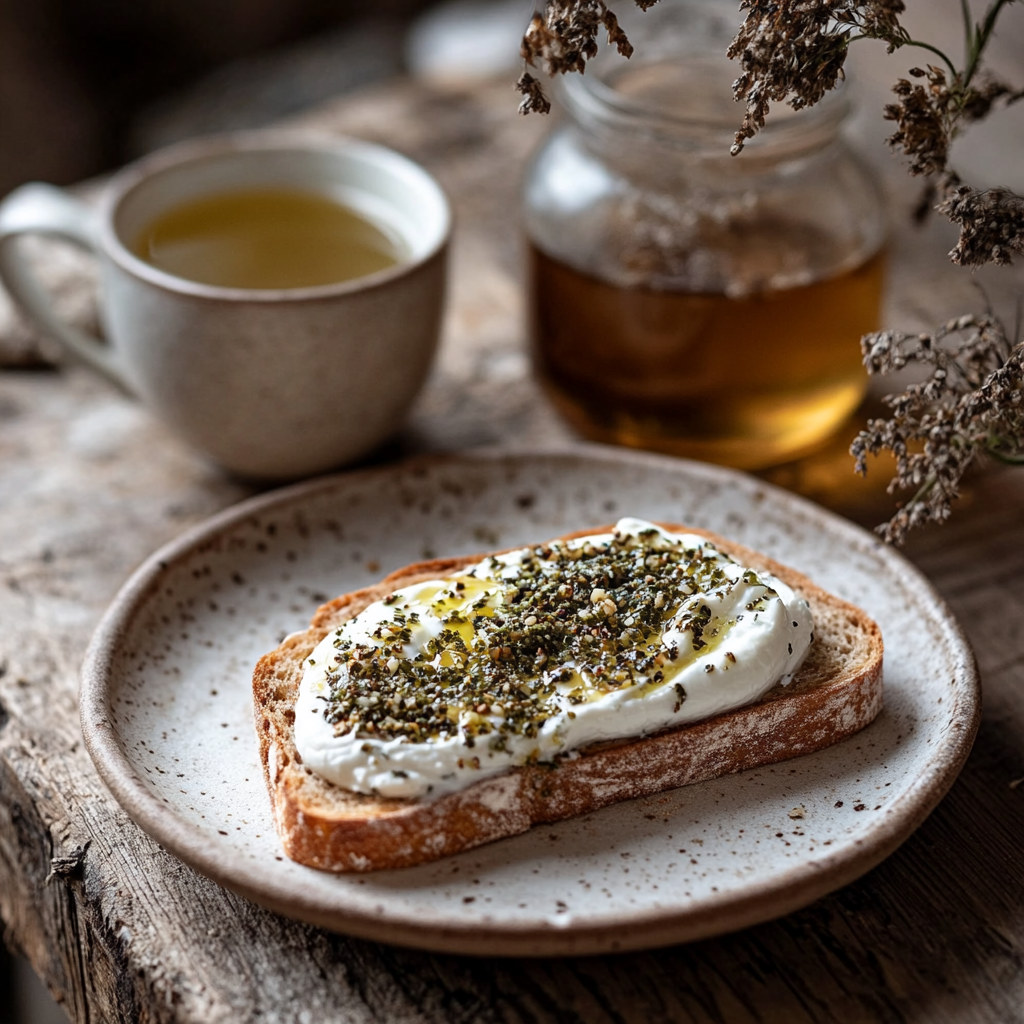
This is the number one question I get in my kitchen: does it taste like “normal” bread?
Sometimes, yes. But it depends. Store-bought versions often fall short—dry, crumbly, or oddly sweet. But fresh, homemade loaves? That’s where the magic happens. When baked properly, the crumb can be soft, the crust golden, and the flavor nutty and rich. You just need the right flour mix and some moisture tricks—like mashed banana, yogurt, or even a spoon of olive oil.
In my Dubai kitchen, I like serving warm slices with labneh and za’atar, or dipping them into infused olive oil. Paired with this vegan dessert recipe, it becomes a feel-good meal that surprises even my gluten-eating friends.
So no—it won’t always be identical to wheat-based bread. But it can be just as good, and in some cases, even better.
My Go-To Gluten-Free Recipes and Tips
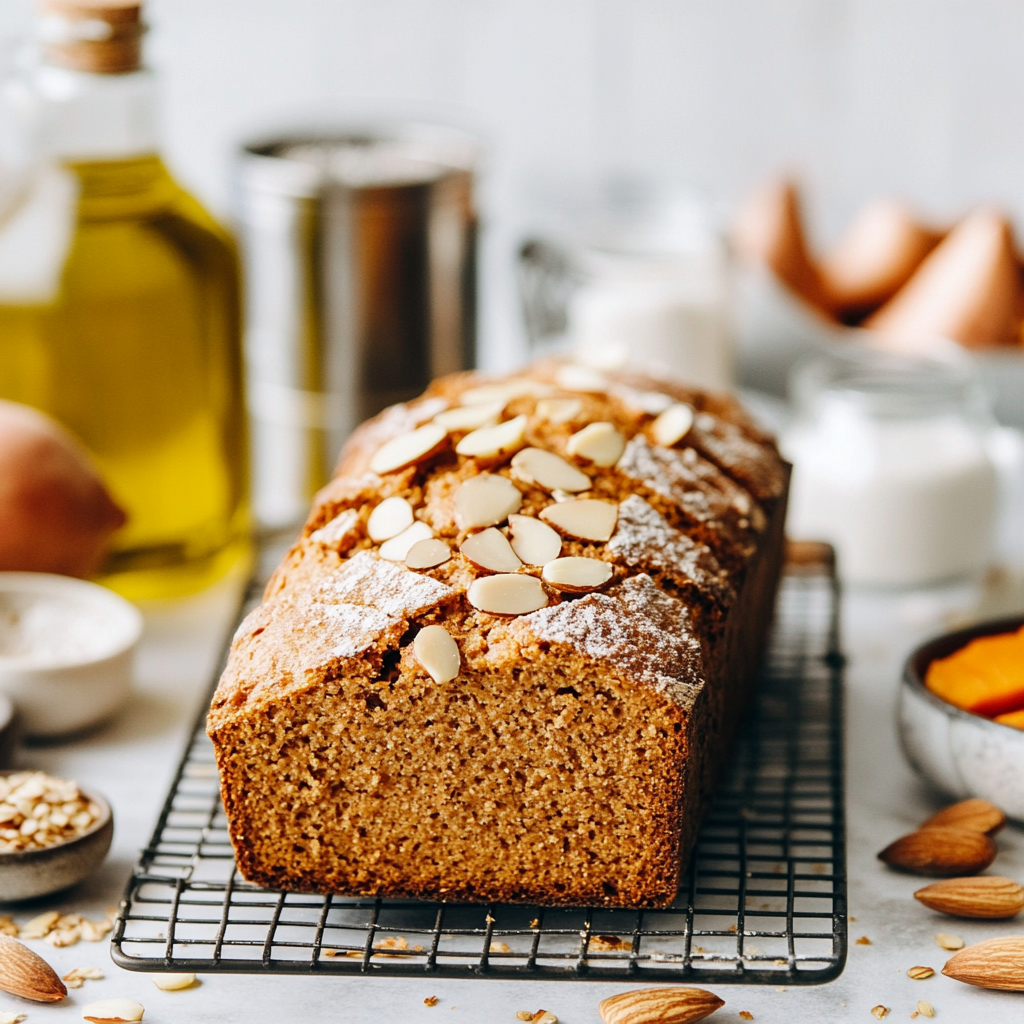
Is Sourdough Gluten-Free?
Classic sourdough bread, even though fermented, still contains gluten. The wild yeast and long fermentation time can reduce gluten levels slightly, but not enough for those with celiac disease or gluten intolerance. So, no—standard sourdough isn’t safe for a gluten-free diet.
However, some bakers now use gluten free flours like teff or brown rice to make real sourdough alternatives. These loaves take time and practice, but the flavor is fantastic—slightly tangy, complex, and deeply satisfying. I’ve been experimenting with a gluten free sourdough in my Dubai kitchen and pairing it with a drizzle of date syrup for a sweet-savory twist.
Always look for certified gluten free labels or ask your baker how it’s made.
Everyday Tips for Baking Gluten Free Bread
Over time, I’ve learned a few non-negotiables when baking gluten free bread at home:
- Use a flour blend. No single flour does it all. A mix of rice flour, starch (like tapioca or arrowroot), and a high-protein flour (like chickpea or almond) works best.
- Add a binder. Psyllium husk, chia seeds, or xanthan gum are essential. They help lock in moisture and give structure.
- Let it rest. After mixing, let your dough sit for 20–30 minutes. Hydration is key to a smooth texture.
- Moisture is magic. Add mashed sweet potato, yogurt, or applesauce for softness and flavor.
Once you master a basic loaf, the combinations are endless. Try it alongside this comforting pink salt trick recipe for a wellness-focused, feel-good meal.
Gluten free bread isn’t about limitations—it’s about learning a new kind of delicious.
FAQ: Gluten Free Bread Questions Answered
What types of bread are gluten-free?
Breads made with rice flour, almond flour, sorghum, buckwheat, chickpea flour, and tapioca starch are naturally gluten-free. Always check labels for certified gluten-free status to avoid cross-contamination.
Why are so many doctors against a gluten-free diet?
Doctors warn that cutting gluten without a medical reason can cause nutritional deficiencies if not managed well. Gluten-free isn’t automatically healthier—it depends on the choices you make.
Is sourdough bread gluten-free?
Most sourdough bread contains gluten. While fermentation may reduce gluten levels slightly, it isn’t safe for those with celiac disease unless it’s made with certified gluten-free flour.
Does gluten-free bread taste like regular bread?
Not always. Many gluten-free breads differ in texture and flavor. However, fresh, well-made versions can be just as tasty, especially when combined with thoughtful ingredients and techniques.
Conclusion
Gluten free bread doesn’t have to be a sacrifice—it can be a celebration. Whether you’re new to the lifestyle or baking your hundredth loaf, there’s always room to learn, improve, and enjoy every bite. With the right blends, a little rest time, and thoughtful ingredients, you can create bread that feels like home. And the best part? You’re baking something that works for your body and tastes amazing, too. So go ahead—grab your favorite flour mix, preheat that oven, and make a loaf that brings joy to your table.
Love this recipe? Let’s stay connected!
If you enjoyed baking this gluten free bread with me, don’t forget to follow for more sweet inspiration and kitchen tips. Join me on Facebook, Pinterest, and Medium for weekly recipes, behind-the-scenes baking, and ideas that mix tradition with a twist. Your next favorite treat is just a click away!

